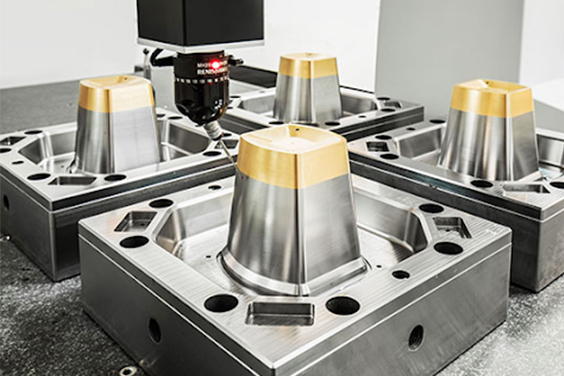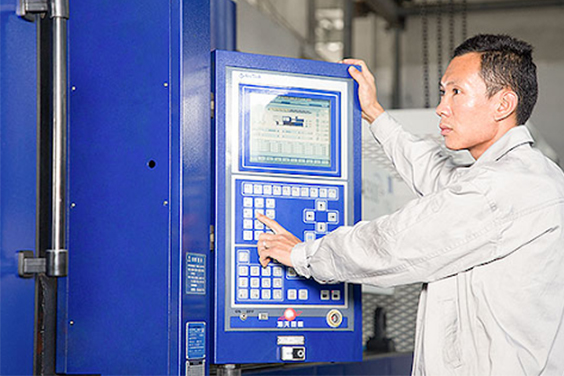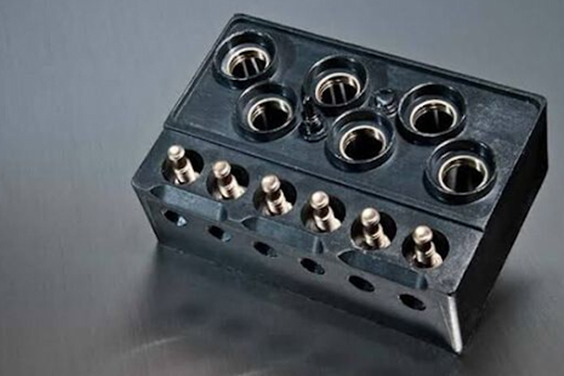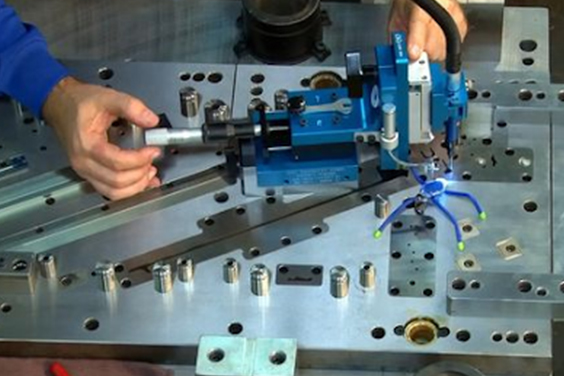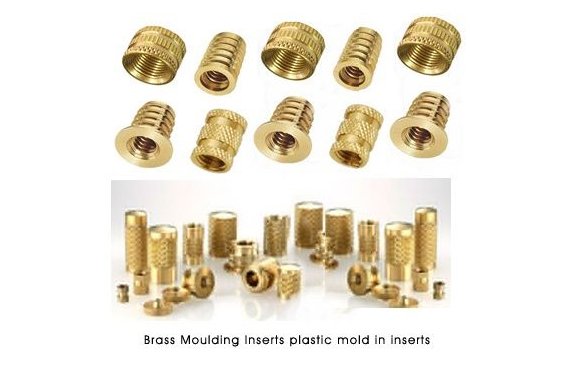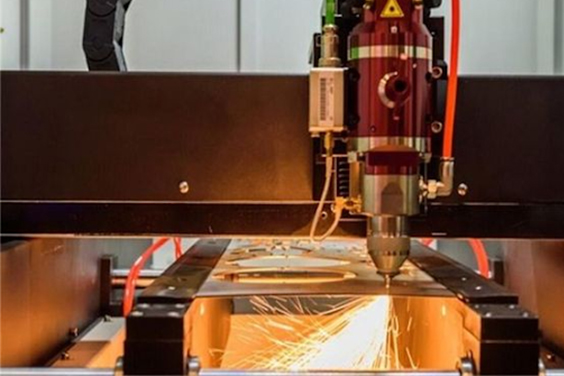Insert Molding Design Guide
- Home
- > Blog
- > Insert Molding Design Guide
Share :
Share :
Molding is the process of transforming raw plastic into the desired end product shape or form. Every product needs a unique molding method, and the overmolding process and insert molding design types are widely regarded as the best on the market.
The traditional plastic production method includes melting or softening the plastic at extremely high temperatures and then molding it into useable forms using various processes.
In this blog article, we will go through insert molding and the different design issues associated with the method in depth. The purpose of this post is to describe the world’s most popular and recommended molding process (insert mold), its working methodology, design concerns, advantages, and applications in many areas.
What Exactly Is Insert Molding?
Insert molding operates on the same fundamental principles as plastic injection molding. Molten resins are injected into a plastic mold that is custom-made to fit the part’s geometric specifications. Plastic resins are pumped into the mold and allowed to harden. After that, they are removed/ejected from the insert mold.
The only difference is that in this case, the metal is placed into the molten resin before the mold is closed. In this manner, the plastic entirely covers the product, and the entire core product is swallowed in the plastic, with no cracks and even wall thickness. The inserted product might be as basic as a blade or a tube, or as sophisticated as a metal insert for a complex machine.
The reason insert molding is the most popular China mould is because it does not require the connection of several plastic elements through screws to create a product cover. The product is contained within the covering, and the cover is produced organically around the product by a mechanical bond. By utilizing CNC machining, it gives a comfortable grip and high-quality product design.
How Does Insert Molding Work?
Injection molding is a popular industrial technology with several advantages. When used in a certain application, the molding material may lack mechanical, chemical, or electrical qualities. An efficient trade-off may typically be achieved by mixing various materials into one product. This combines the inexpensive cost of injection molding, for example, with the good mechanical qualities of a brass nut. It is a procedure that has several advantages over injection molding and assembly, both of which will be described in this article.
Design Guidelines
Insert molding design guidelines may help with product manufacture in a variety of ways. Insert molding design criteria are comparable to those for conventionally molded items. The most commonly utilized rules include maintaining uniformity in wall thickness, introducing a draft for ejecting the component, and so on.
When considering insert molding, however, several particular concerns must be taken into mind. Because injection molding inserts are inserted into the mold, the position of the insert must be carefully considered. It is also critical to keep them in place while the molding is taking place. Designing the undercut, for example, can enhance the insert strength.
Here are a few examples of how mold design must be carried out in a certain method.
The Machinery
Managing wall breadth during part design lets you monitor your part’s appearance, weight, and toughness. Overly thick parts cause unattractive sink, warp, and interior cavities. To avoid this, substances have prescribed wall thickness guidelines—keep in mind that this is merely guidance, as not all sections will have wall thicknesses at the extremes.
Inserts
Various sorts of inserts are utilized in the design engineering of molded components. In most cases, the metal insert in the plastic molding is constructed of brass, stainless steel, or ordinary steel.
These molds contain threaded surfaces, which improves adherence to the product.
The molds are put vertically in the machine, either by hand or by CNC machining. The vertical posture ensures that the mold remains in place during over-molding and insert molding by using gravity. The molten plastic is now poured into the mold, which is then closed.
Inserts are utilized in a variety of techniques, including injection molding, compression molding, GRP molding, SMC/DMC molding, extrusion blow molding, structural foam, and rotational molding.
Product Design
The product design must be compatible with the inherent restrictions and properties of the insert molding process. Many of the same ideas apply to this design process as they do to traditional injection molding design:
Sections (particularly load-bearing bosses) should be thick enough to sustain loading forces.
To avoid undesired effects caused by material cooling, the final product should not exceed the maximum thickness determined by simulations throughout the design phase.
Inserts must be carefully chosen to give enough mechanical strength. Correct insert specification would eliminate “torque out” and “pull out” (mechanical failures of the plastic/insert interface caused by excessive torque or tensile force, respectively).
The ideal engineering plastic must be chosen, one with excellent adhesion so that the insert may be wrapped and adhered to properly and firmly.
Plastic Molding Threaded Inserts
Insert molding is frequently used to put threaded fasteners into the parent material. Computers and terminal boards, automobile items, electronic equipment, business machinery, aerospace products, communications equipment, and instrument boxes are examples of typical uses.
Several manufacturers currently specialize in threaded inserts. The technology has advanced by leaps and bounds, and it now offers purpose-built implants that deliver great outcomes.
These fasteners are often made of brass, although they can also be made of stainless steel or aluminum. The fasteners might be molded in (insert molding), ultrasonically inserted, or simply heat staking forced in. Molding the insert in results in improved mechanical qualities, more accuracy, and a faster manufacturing rate.
It is critical that the fastener and its installation can resist the design’s loading requirements. Undercuts and shoulders are used to lock the fastener into the parent material. A helical groove pattern is employed in current designs to give both tensile and torsional resistance. This safeguards the product against “torque out” and “pull out” faults.
The Advantages of Insert Molding
As previously said, the insert molding procedure is utilized to create components that are tougher and more durable than other solutions. This plastic molding technique (insert molding) is a superior and more efficient solution for your molding needs in the following ways:
- The materials used in the insert molding design are specially selected for the product application. This assures that the material will be suitable for all sorts of goods, whether commercial or residential.
- When compared to other molding techniques, insert molding is less expensive and more cost-effective. Because insert molding is a one-step process, assembly and labor expenses are reduced overall.
- Insert molded components are devoid of flaws such as misalignment, loose halves, and so on. Because it does not require any assembly procedures, this makes the process considerably more trustworthy and trusted than other approaches.
Conclusion
Nonetheless, insert molding may be a difficult process. That’s why collaborating with a seasoned manufacturing partner like Immould is the most dependable approach to ensure that components fulfill critical material, performance, and tolerance requirements without stretching production timetables or breaking the money. To learn more, please contact us immediately.

